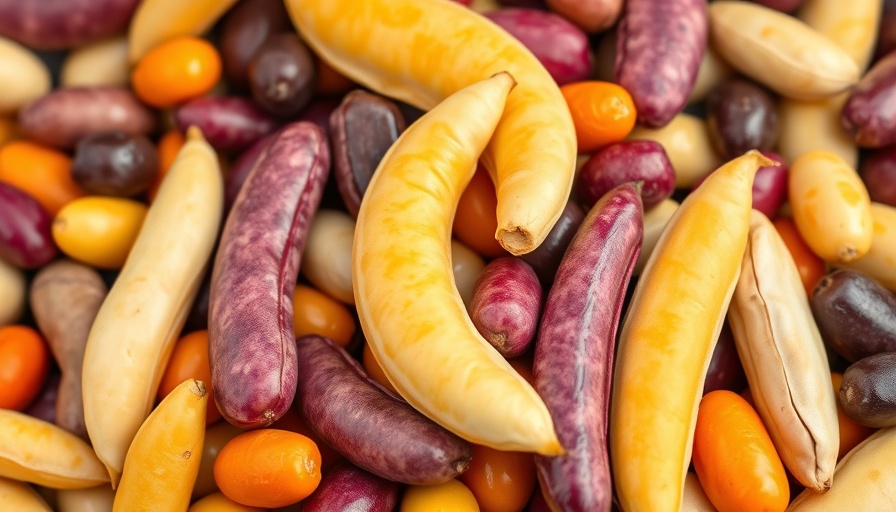
Discover the Best Lima and Butter Beans for Your Garden
Growing lima beans, also known as butter beans, can transform your gardening experience, offering both nostalgia and a delicious harvest. The Phaseolus lunatus is a versatile and rewarding plant that can enhance your garden's diversity while providing a satisfying yield. As you embark on your gardening adventure, consider the favorite flavors and unique characteristics of the 13 best cultivars detailed below.
Engage Your Senses: Flavor and Variety Insights
Choosing the right variety of lima beans can set the tone for your summer garden. Each cultivar not only offers distinct flavors but also different growth habits. For example, the Baby Fordhook presents an excellent choice with its smaller seeds and delicate flavor, making it ideal for fresh eating or steaming. On the other hand, Big Mama grows enormous seeds and thrives in warm conditions, making it an excellent choice for those seeking maximum yield.
Why Growing Lima Beans is Beneficial for Your Health
Incorporating lima beans into your diet not only elevates your meals but also supports your well-being. These beans are rich in fiber, protein, and essential vitamins, which can aid in digestion and boost your immune system. By growing your own, you ensure that you're consuming freshly harvested produce packed with nutrients and devoid of potentially harmful pesticides.
Gardening Tips for Success with Lima Beans
To grow these nutritious beans successfully, adequate knowledge of plant care is key. Lima beans prefer well-draining soil, consistent moisture, and full sun exposure. A simple watering schedule, along with the use of organic fertilizers, can significantly impact your yield.
Additionally, consider spacing your plants properly to prevent overcrowding and allow for airflow. This care not only mitigates the risks from pests but also enhances overall plant health.
Landscaping Ideas: Incorporating Lima Beans in Your Garden Design
Lima beans can double as decorative plants, especially when growing several varieties. Using trellises, you can train your pole beans upward, beautifying your garden space while making efficient use of vertical gardening techniques. Pair them with companion plants like corn for a productive and visually appealing garden layout.
A Look into Gardening History: Why Lima Beans Remain Popular
Historically significant, lima beans have nourished numerous communities for generations. They were once a staple in many diets, especially during times when food scarcity was prevalent. Today, their continued popularity speaks to both their culinary versatility and ease of cultivation. Growing lima beans connects us to our gardening ancestors, who cultivated crops to feed their families and communities.
Getting Started: Your Guide to Planting Lima Beans
When you’re ready to plant, remember to direct sow the seeds after the last frost date in your area. Whether you're focusing on raised garden beds or traditional in-ground plots, ensure your soil is enriched. After a few months of care, you can look forward to the rewarding season of harvesting these flavorful beans.
Conclusion: Start Your Lima Bean Journey Today
Growing lima beans is not just a gardening project; it's an opportunity to reconnect with nature, enhance your health, and explore new culinary delights. As you select your varieties from the Baby Fordhook to the Jackson Wonder, consider how they fit into your garden design for a more sustainable backyard. Enjoy this journey into organic gardening, and soon you’ll be soaking up the rewards of your labor come harvest time.
 Add Row
Add Row  Add
Add 




Write A Comment